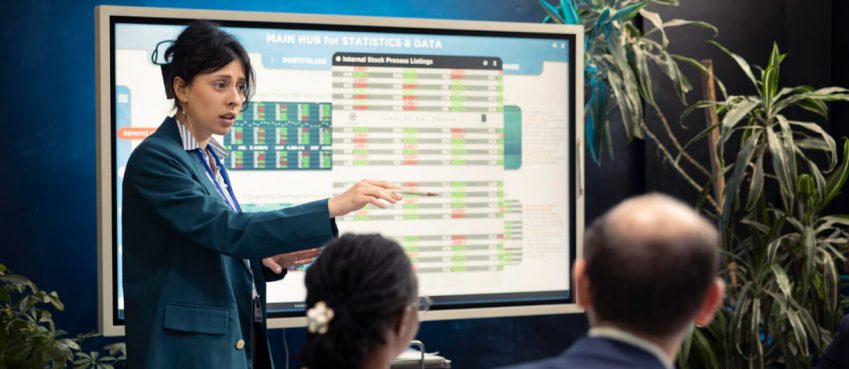
At the forefront of the question of whether construction can be future-proofed is reality capture construction technology, harnessing the power of detailed imagery and data to create digital representations of physical spaces. This technological leap promises not only to enhance the precision and efficiency of future-proof construction projects but also to lay the groundwork for buildings that can adapt to the unforeseen needs of tomorrow.
The Role of Modular Construction
Modular construction, a process where buildings are constructed off-site in sections and then assembled on-site, redefines structures’ scalability and adaptability. This method not only significantly reduces construction time but also minimizes waste and environmental impact. Modular units can be designed to be disassembled and reused, presenting a sustainable solution to the evolving demands of urban development.
Efficiency and Sustainability
The inherent efficiency of modular construction, combined with its reduced waste and lower carbon footprint, positions it as a key player in the future of sustainable building practices. By pre-fabricating sections of buildings in controlled factory environments, the process minimizes the energy consumption and material waste typically associated with traditional construction methods.
Also read: 50 Apps Like TikTok - Top TikTok Alternatives For Viral ContentAdaptability and Resilience
Modular construction offers unprecedented flexibility in the design and functionality of buildings. Structures can be easily expanded, reduced, or repurposed to accommodate changing needs, making them more resilient to social and environmental shifts. This adaptability is crucial for future-proofing our built environment against the unpredictable challenges of the future.
Integrating Smart Technologies
The integration of smart technologies into the fabric of buildings is transforming them from static structures into dynamic systems capable of interacting with their occupants and the environment. From energy management to security and comfort, smart technologies are making buildings more responsive and efficient.
Energy Efficiency and Management
Smart building technologies are revolutionizing the way we manage energy consumption. Through the use of sensors and AI algorithms, buildings can optimize their use of resources, significantly reducing their environmental footprint while ensuring comfort for occupants.
Enhancing Occupant Comfort and Safety
Beyond energy management, smart technologies enhance the safety and comfort of buildings. Automated systems can adjust lighting, temperature, and air quality in real time, while advanced security features ensure the safety of occupants. This level of responsiveness not only improves the quality of life but also extends the functional lifespan of buildings.
Also read: Bobbie Formula Reviews 2024 (Read Before You Buy)Embracing 3D Printing in Construction
3D printing is set to disrupt the construction industry by enabling the creation of complex, customized structures with unprecedented speed and efficiency. This technology reduces waste and offers the flexibility to use a variety of materials, including those that are more environmentally friendly.
Customization and Efficiency
3D printing allows for the customization of building components to fit specific design requirements, all while significantly cutting down construction time. This efficiency opens up new possibilities for architectural creativity and innovation.
Sustainability and Material Innovation
The ability to use a diverse range of materials in 3D printing paves the way for more sustainable construction practices. From recycled plastics to novel composites, the search for environmentally friendly building materials is gaining momentum, offering a path to reduce the construction industry’s ecological impact.
Also read: Top 7 Industrial Robotics Companies in the worldAdvancing Towards Green Construction
The global push towards sustainability has catalyzed the development of green construction practices, ensuring that the buildings of tomorrow are not only technologically advanced but also environmentally conscious. This construction approach emphasizes the use of renewable resources, energy efficiency, and a minimal environmental footprint, setting a new standard for the industry.
Renewable Energy Integration
The integration of renewable energy sources, such as solar panels and wind turbines, into building designs is becoming increasingly commonplace. This shift not only reduces reliance on fossil fuels but also provides buildings with a degree of energy autonomy, making them more resilient to changes in energy supply and demand.
Also read: Best 10 Semrush Alternative For 2025 (Free & Paid)Water Conservation and Management
In addition to energy efficiency, green construction practices place a strong emphasis on water conservation. Advanced rainwater harvesting systems and water recycling technologies are being integrated into buildings to reduce water consumption and mitigate the impact of construction on local water cycles.
Sustainable Materials and Practices
The choice of materials plays a critical role in green construction. The industry is moving towards the use of sustainable, non-toxic materials that are sourced responsibly. This includes everything from bamboo and recycled steel to low-VOC (volatile organic compounds) paints. Additionally, construction practices are being refined to minimize waste and pollution, further reducing the environmental impact of building projects.
Also read: The Top 10 Digital Process Automation (DPA) ToolsConclusion
The question of whether construction can be future-proofed is answered with a resounding yes, thanks to the innovations in reality capture technology, modular construction, smart technologies, and 3D printing. These advancements are not just shaping the future of the construction industry; they are redefining it. As we continue to push the boundaries of what’s possible, the buildings of tomorrow will be more adaptable, efficient, and sustainable than ever before, ready to meet the challenges of the future head-on.
Top 10 News
-
01
[10 BEST] AI Influencer Generator Apps Trending Right Now
Monday March 17, 2025
-
02
The 10 Best Companies Providing Electric Fencing For Busines...
Tuesday March 11, 2025
-
03
Top 10 Social Security Fairness Act Benefits In 2025
Wednesday March 5, 2025
-
04
Top 10 AI Infrastructure Companies In The World
Tuesday February 11, 2025
-
05
What Are Top 10 Blood Thinners To Minimize Heart Disease?
Wednesday January 22, 2025
-
06
10 Top-Rated AI Hugging Video Generator (Turn Images Into Ki...
Monday December 23, 2024
-
07
10 Top-Rated Face Swap AI Tools (Swap Photo & Video Ins...
Friday December 20, 2024
-
08
10 Exciting iPhone 16 Features You Can Try Right Now
Tuesday November 19, 2024
-
09
10 Best Anatomy Apps For Physiologist Beginners
Tuesday November 12, 2024
-
10
Top 10 Websites And Apps Like Thumbtack
Tuesday November 5, 2024







